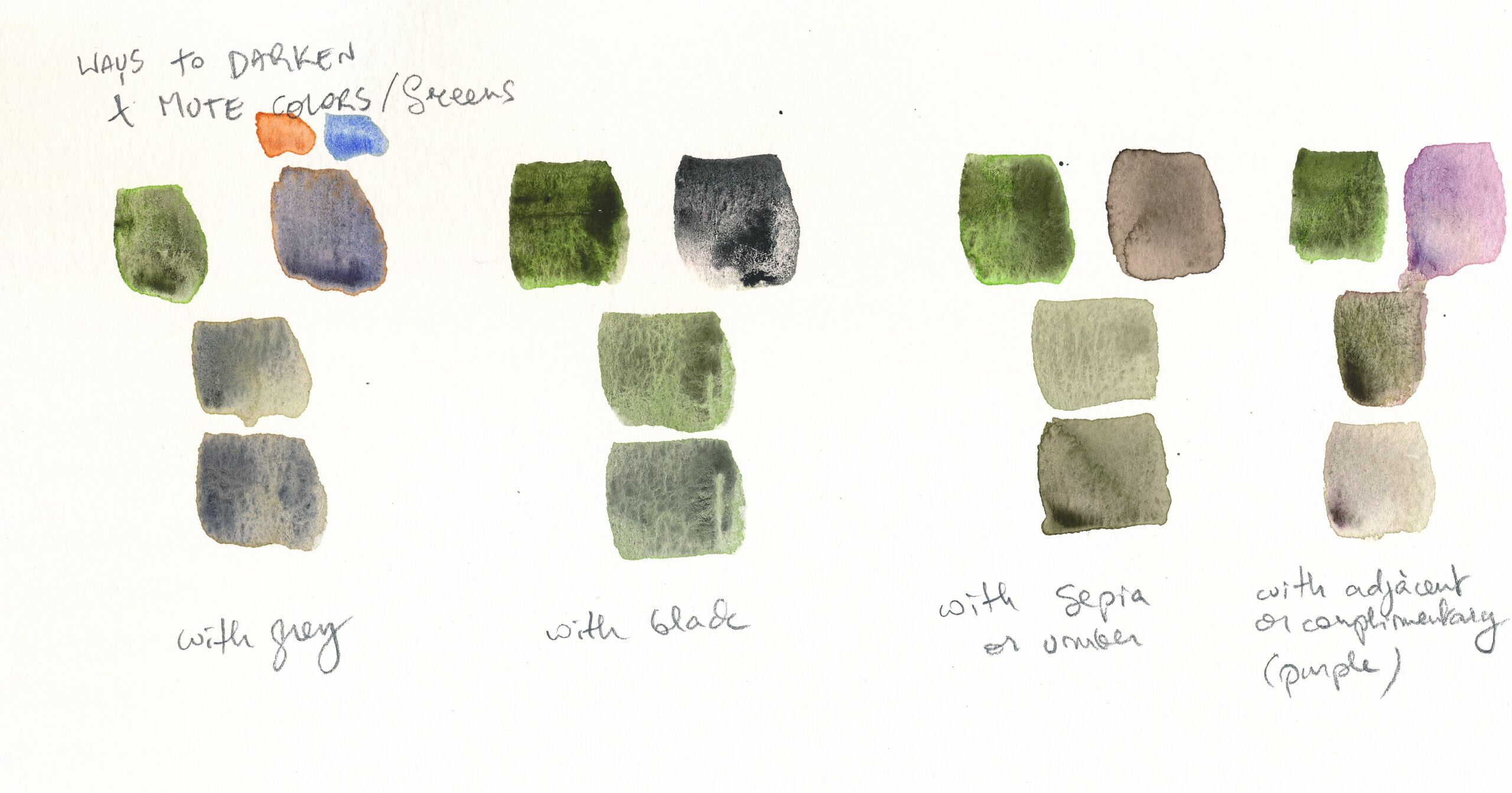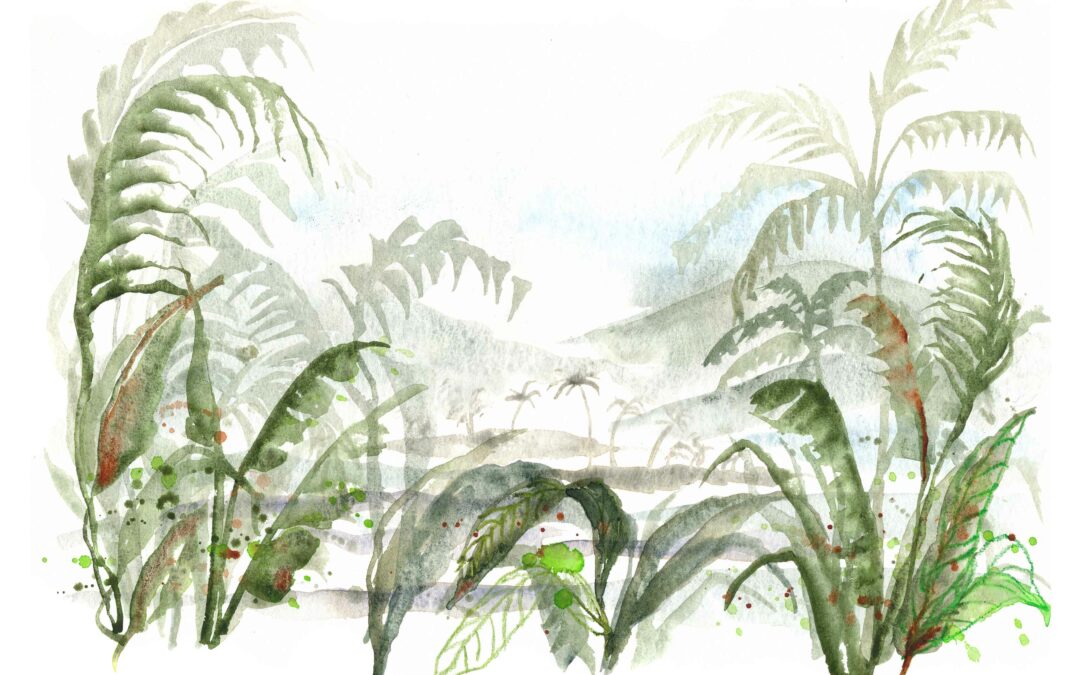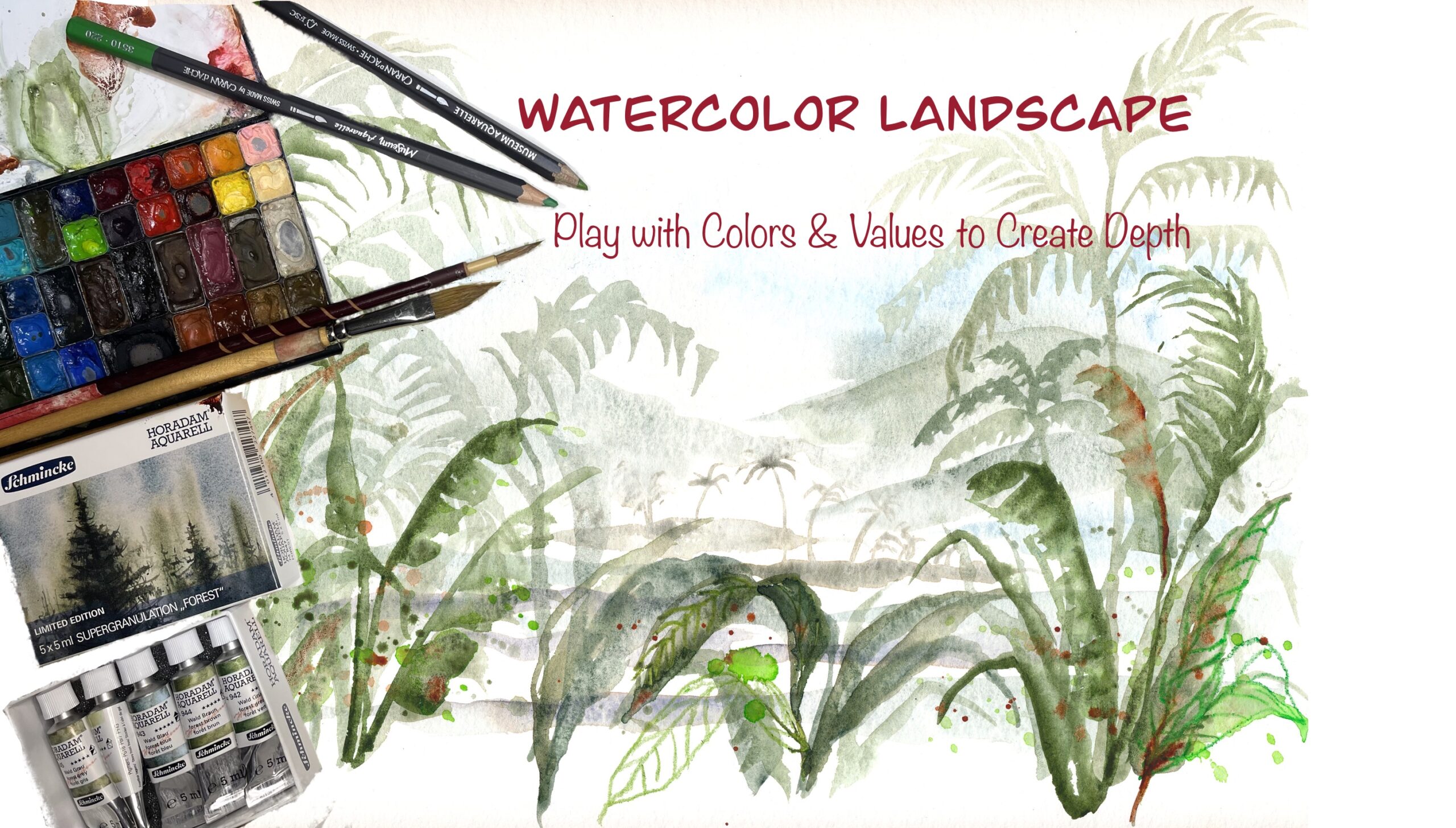What I find most tricky to do when I’m out sketching is to create depth in a watercolor sketch!
Creating depth in a watercolor painting involves understanding the principles of perspective, value, color, and composition. Here are some tips to help you achieve a sense of depth in your watercolors:
- Use perspective: Utilize one-point, two-point, or three-point perspective to create a realistic sense of depth in your painting. Vanishing points and converging lines can help establish distance and space. Remember a tip if you don’t feel like learning perspective rules: just look in what direction the lines are going for your observation sketch
- Atmospheric perspective: Distant objects typically appear lighter, less saturated, and cooler in color. Use this principle to create depth by painting objects in the distance with lighter and cooler colors than those in the foreground. With cooler colors, I mean colors which have more blues, and which are muted. With warmer colors I mean colors which have more yellow.
- Layering: Apply multiple layers of watercolor to build up depth and dimension. Start with a light wash for distant areas, then gradually add more pigmented layers as you move closer to the foreground.
- Value contrast: Emphasize the difference in light and dark values to create depth. Shadows and highlights play a significant role in establishing the illusion of three-dimensional space.
- Color saturation: Objects in the foreground should be more vibrant and saturated than those in the background. This helps create a sense of distance and separation. So for the objects that are further away, it’s best to use muted colors.
- Detail and texture: Include more intricate details and textures in the foreground elements while keeping the background simpler and less defined. This contrast creates a sense of depth by emphasizing the difference in focus between near and far objects.
- Overlapping elements: Arrange objects or shapes so that they overlap one another. This helps to establish spatial relationships and create a sense of depth in your painting. Which object is in front? Which is in the back? The ones in the back are not totally visible!
- Size and scale: Objects closer to the viewer should appear larger, while those farther away should appear smaller. Vary the size and scale of elements in your painting to suggest distance and depth.
- Composition: Arrange your painting’s elements to guide the viewer’s eye through the scene, using leading lines or focal points to create depth.
Remember to practice regularly and be patient, take time to play and experiment. Experiment with different approaches to find what works best for your artistic style.




Just found your site. Lovely and so much wonderful helpful information. I’m headed to Bruges on May 2nd for a watercolor workshop with Leslie Fehling. This will be my first time overseas and I’m looking forward to it!!
Hello Robin! Oh Bruges is wonderful!
How long will you be staying? where do you come from?
Tell me if you want to do some urbansketching! I can see with the urbansketchers if we can organize an event somewhere. What els will you be visiting?